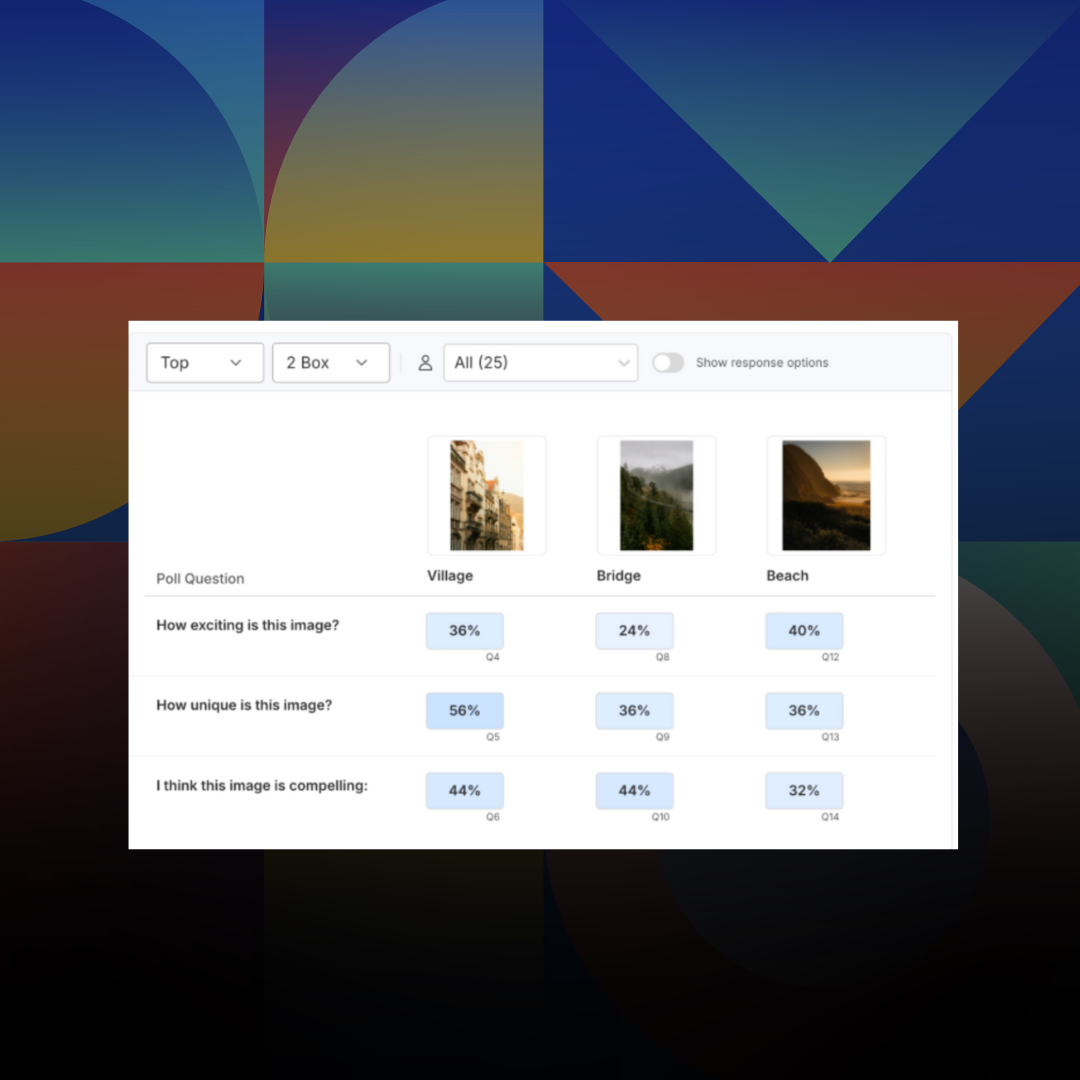
Research 101
Introducing: Poll Comparison - Streamline Concept Testing and Make Better Decisions Faster
Emmet Hennessy
November 24, 2025
Market Research
Articles

Research 101
Introducing: Poll Comparison - Streamline Concept Testing and Make Better Decisions Faster
Emmet Hennessy
November 24, 2025
Market Research
Articles

AI
Purpose-Built for Research AI is Here - a Letter from the CPO
Jessica Dubin
October 21, 2025
Market Research
Articles

AI
Purpose-Built for Research AI is Here - a Letter from the CPO
Jessica Dubin
October 21, 2025
Market Research
Articles
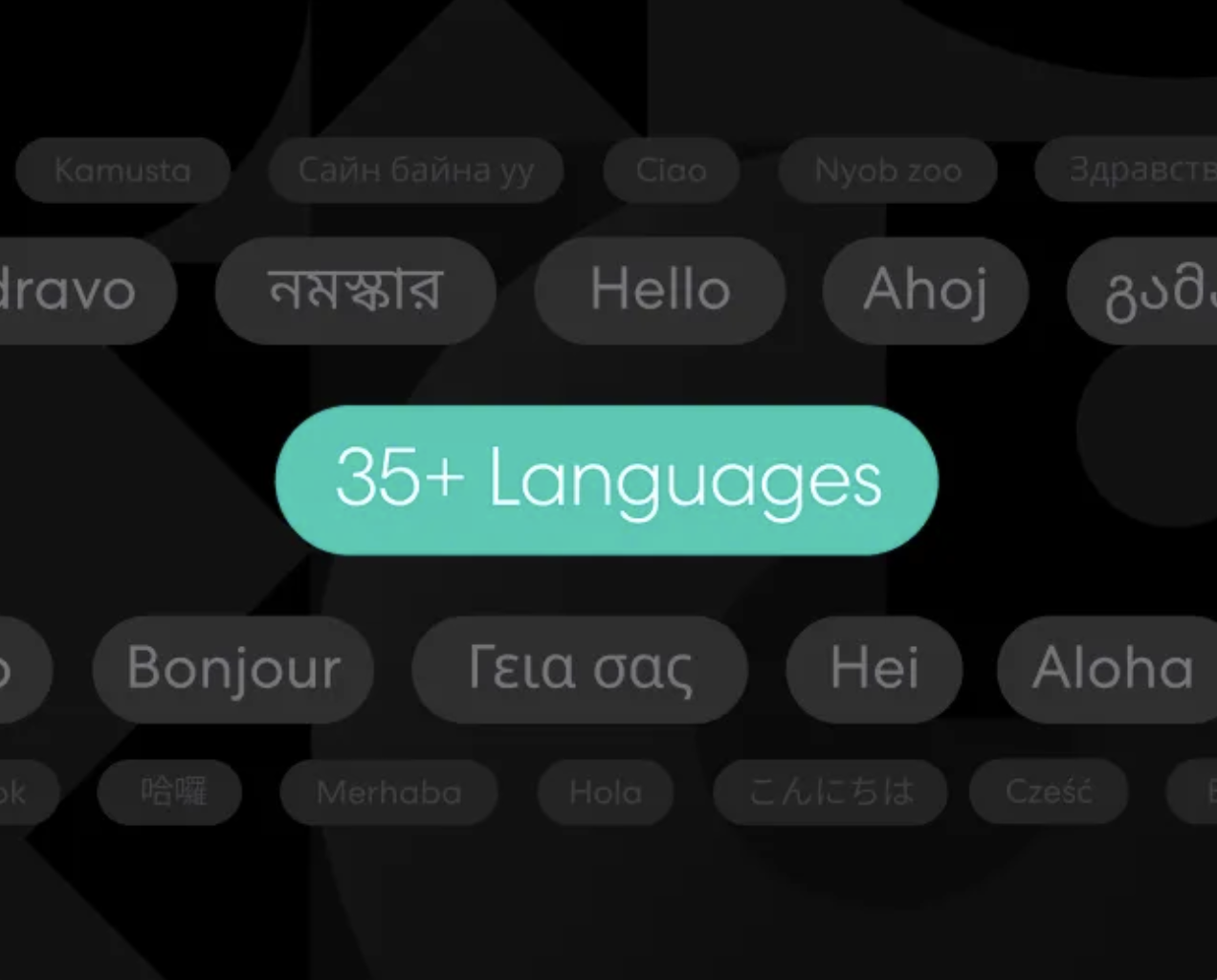
Advanced Research
Unlock Agile Global Insights: Using Remesh Multi-Language Conversations for Research Across Audiences
Customer Success Team
October 14, 2025
Market Research
Articles

Advanced Research
Unlock Agile Global Insights: Using Remesh Multi-Language Conversations for Research Across Audiences
Customer Success Team
October 14, 2025
Market Research
Articles

AI
The Prompt Is the New Moderator Guide
Anthony Lam
September 16, 2025
Market Research
Articles

AI
The Prompt Is the New Moderator Guide
Anthony Lam
September 16, 2025
Market Research
Articles

AI
Building an AI-Ready Research Stack: Beyond Data Preparation
Anthony Lam
September 9, 2025
Market Research
Articles

AI
Building an AI-Ready Research Stack: Beyond Data Preparation
Anthony Lam
September 9, 2025
Market Research
Articles

AI
Agentic AI for Research: A Practical Primer
Dan Reich
September 2, 2025
Market Research
Articles

AI
Agentic AI for Research: A Practical Primer
Dan Reich
September 2, 2025
Market Research
Articles
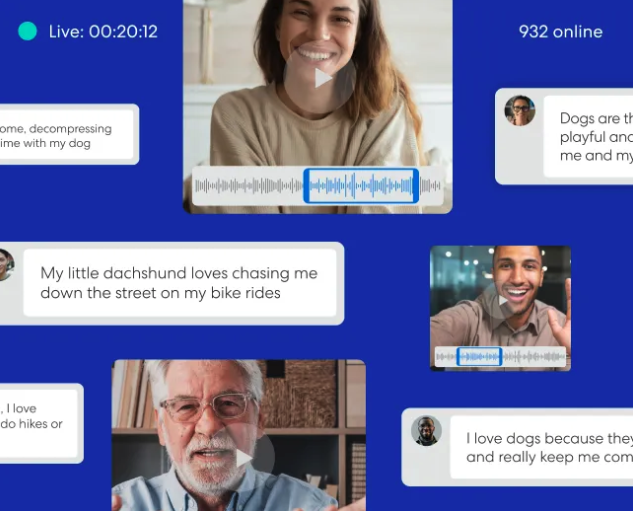
Advanced Research
Webinar Recap: Unlocking Depth at Scale - Remesh Video for Researchers
Customer Success Team
August 5, 2025
Market Research
Webinars

Advanced Research
Webinar Recap: Unlocking Depth at Scale - Remesh Video for Researchers
Customer Success Team
August 5, 2025
Market Research
Webinars

Transparency in AI: How Remesh Builds Trust Through Responsible Implementation
Ross Coudeyras
July 21, 2025
Articles

Transparency in AI: How Remesh Builds Trust Through Responsible Implementation
Ross Coudeyras
July 21, 2025
Articles

Advanced Research
Webinar Recap: Turning Employee Engagement Insights into Action with Remesh
Customer Success Team
June 16, 2025
Employee Research
Articles

Advanced Research
Webinar Recap: Turning Employee Engagement Insights into Action with Remesh
Customer Success Team
June 16, 2025
Employee Research
Articles
The Global Research Revolution: From Clipboards to Clicks
Global research has transformed in recent decades. Discover how technology has revolutionized the field, turning a complex, time-consuming process into an efficient, accessible method for gathering worldwide insights.



Imagine being detained for hours in Azerbaijan all because you didn't get permission to talk to locals about an upcoming presidential election. This wasn't the plot of a spy movie—this was something that happened to me in the early 2000s while conducting global research. Back then, such risks and challenges were part of the job.
In those days, international research was a complicated and time-consuming process. We faced countless obstacles. Language barriers turned simple questions into complex puzzles. Cultural missteps could derail an entire project. The logistics were a nightmare—coordinating travel, finding suitable venues, and hoping enough people would show up. After all that effort, we'd often return home with insights that were already outdated.
But technology has turned global market research on its head. Now, researchers can tap into the minds of consumers from Tokyo to Toronto without leaving their office. Language barriers? They're overcome with the click of a button. The process is streamlined and more efficient than ever before.
How we used to do global market research
Twenty years ago, global research meant face-to-face interactions. Researchers traveled across continents with clipboards and pens, hoping to catch the right people at the right time.
Once on location, we'd conduct intercept surveys, going from corner to corner in busy areas. We used a simple sampling technique called the "nth" method. This meant we'd interview every fourth person or every seventh male over 30, for example. It wasn't perfect, but it helped us get a mix of respondents.
Alternatively, we'd set up makeshift focus group rooms in rented halls or hotel dining rooms. There, we'd watch participants through closed-circuit television, working with translators to understand the discussions.
These methods came with big challenges. Costs were high, and everything took forever. Getting a diverse mix of participants was tough, and keeping things consistent across countries was an ongoing battle. The whole production often took weeks or even months to complete.
One time, we faced an unexpected hurdle while conducting international research in Thailand. Participants were unusually reluctant to open up. Their responses were limited to two or three words, making it incredibly difficult to gather meaningful insights. It was a stark reminder of how cultural differences can impact research outcomes.
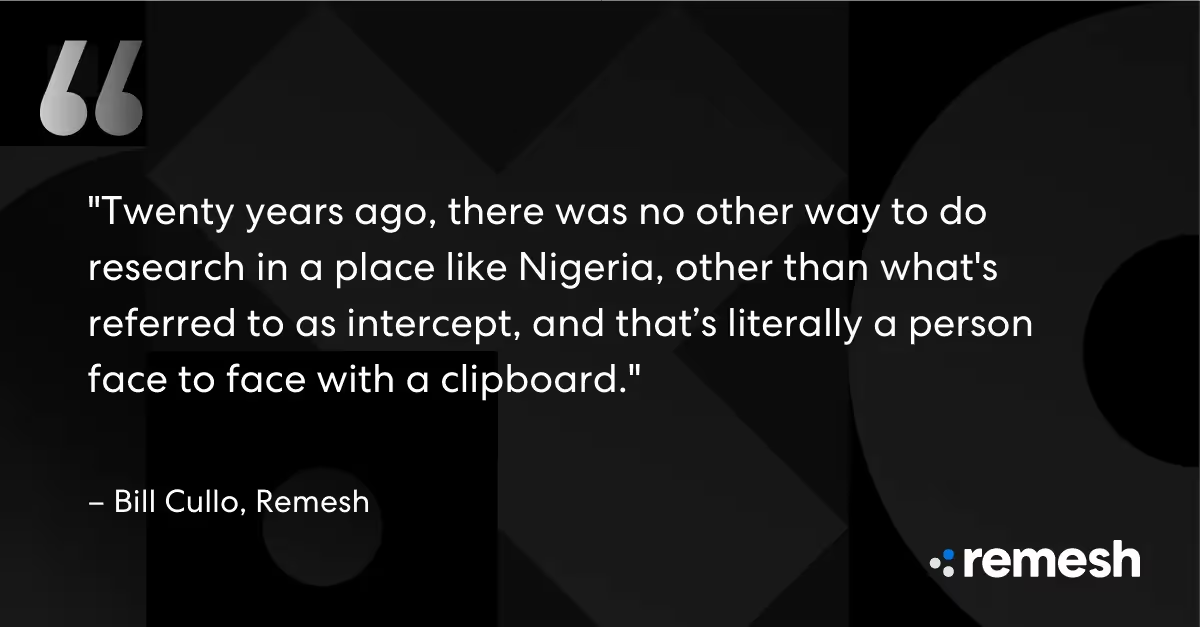
How technology changed international research
Thankfully, technology has revolutionized how we do global research. Online platforms now let us reach people worldwide quickly and affordably. The internet enables rich, multi-faceted interactions with participants across the globe, allowing us to connect in ways that were once only possible through costly and time-consuming travel.
One game-changing tool in international research is the Remesh platform. With Remesh, we can complete a project in a single hour-long session that once would have taken an entire summer and involved extensive travel. In the past, we might have spoken to 20 people across four locations over a month. Today, we can engage with 100 or more participants in a single session.
These technological solutions have made research less risky, more efficient, and more likely to succeed. They've also made it possible to include a wider geographic spread of participants than we could with traditional in-person methods.
For example, I recently worked on a project in Japan using Remesh. Instead of spending weeks in the country, we defined the research guide, finished it, and conducted the session all in one go. Yes, I had to be up at 4 a.m. my time, but we got it done in an hour. The best part? We had a greater geographic distribution of participants than we would have achieved with physical focus groups. Not to mention, the cost savings were immense.
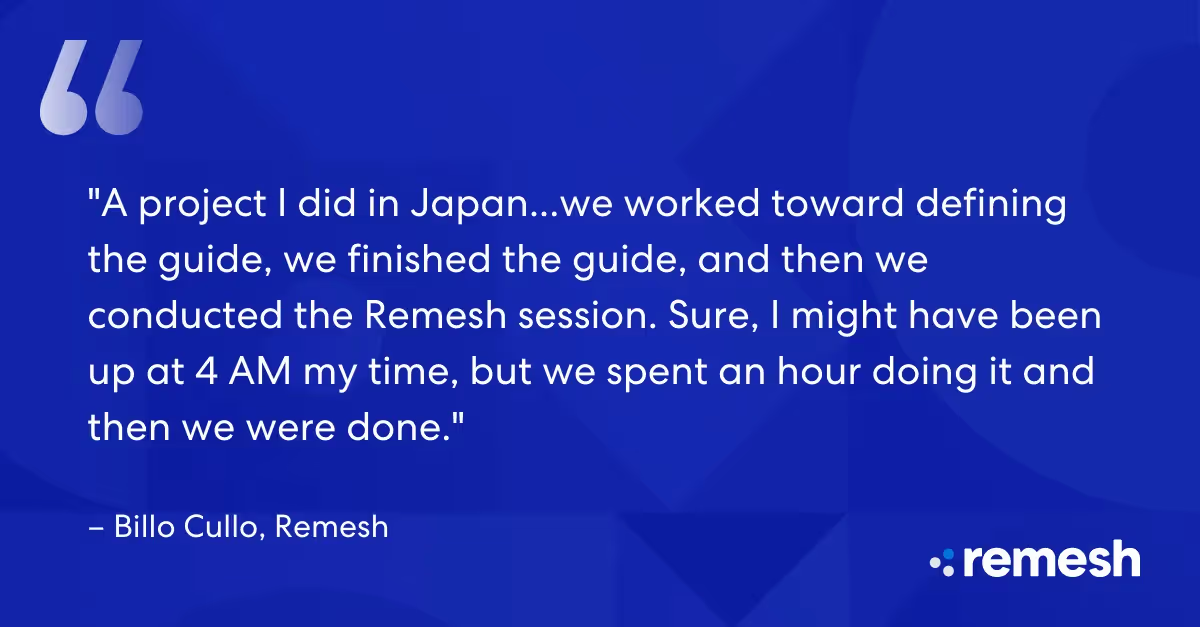
When companies need global research
Companies turn to global research for various reasons. They might be planning to introduce their products in a new country and need to understand local preferences. Some need to assess how people in different countries perceive their brand, while others want to monitor their competitors' activities worldwide.
Take Philip Morris International (PMI), for example. They faced issues that were similar across Europe and Asia-Pacific regions, like cigarette label warnings. We conducted both qualitative and quantitative research in different markets to help them understand these challenges.
Another example is the hard cider market. In the United States, it's a mature market where consumers have established preferences and familiarity with various brands. But in some European markets, the product is still being introduced. The research needs are completely different in each case.
Or consider the topic of fracking—the process of extracting natural gas by breaking up rocks. In places like Ohio and Pennsylvania, you might find friendly territory for this discussion. But in other regions, it can be a highly controversial topic. Understanding these regional differences is crucial for effective research.
Challenges of global market research
Despite all the advancements, some challenges persist. Language differences are still a significant hurdle. Market researchers often need in-country, native-speaking moderators who understand local nuances and slang.
Cultural sensitivity remains crucial. We have to be aware of local customs and potential taboos. For instance, when I was in India, I learned quickly not to make jokes about cows. It's these small cultural details that can make or break a research project.
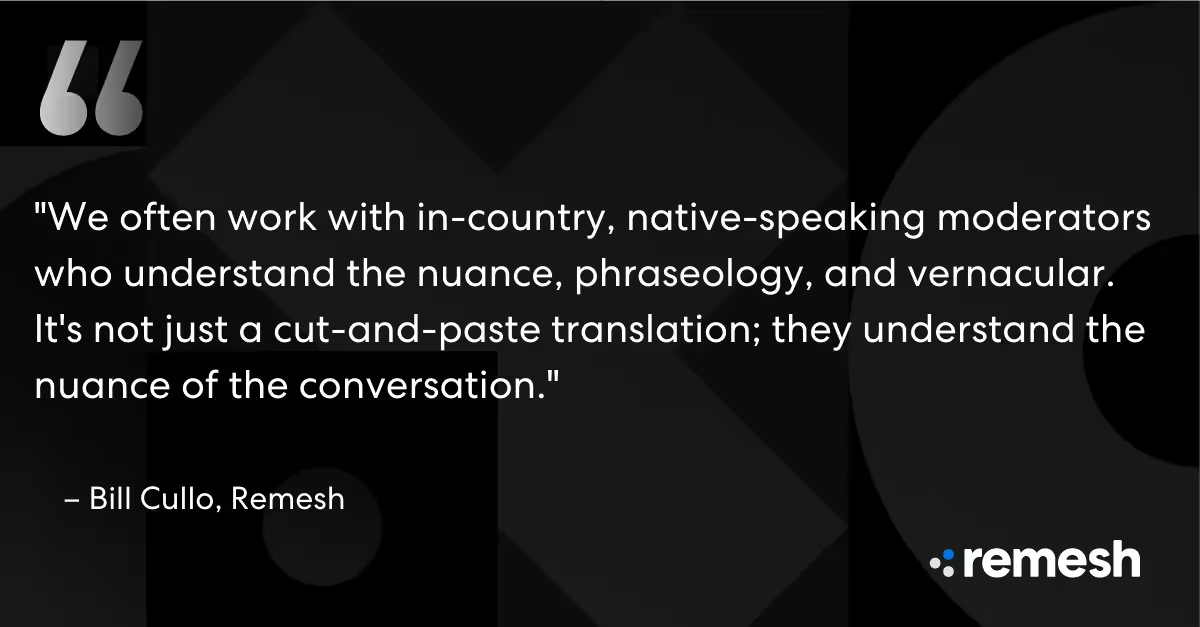
The future of global research
As technology continues to advance, global research will become even more sophisticated and accessible. While we can't conduct a truly simultaneous global focus group due to time zone differences, we can get pretty close with tools like Remesh.
We now use specialized software that allows people from various countries to respond to the same questions and view identical information. Although participants may engage at different times, we can combine their responses to provide a comprehensive global perspective. Learn more about conducting multi-lingual research.
This modern approach is a far cry from traditional focus groups. We can now accommodate hundreds or even thousands of participants, whereas conventional settings involved only a small number. Participants can contribute at their convenience, eliminating the need for travel and reducing costs. As a result, we can obtain results much more quickly.
In conclusion, while global market research still has its unique challenges, technology has made it more accessible, efficient, and cost-effective than ever before. As these tools continue to evolve, our ability to understand consumer needs and preferences across different cultures will only deepen. This enables businesses to make more informed decisions in the global marketplace—without the risk of being detained in Azerbaijan.
-
Lorem ipsum dolor sit amet, consectetur adipiscing elit. Suspendisse varius enim in eros elementum tristique. Duis cursus, mi quis viverra ornare, eros dolor interdum nulla, ut commodo diam libero vitae erat. Aenean faucibus nibh et justo cursus id rutrum lorem imperdiet. Nunc ut sem vitae risus tristique posuere.
-
Lorem ipsum dolor sit amet, consectetur adipiscing elit. Suspendisse varius enim in eros elementum tristique. Duis cursus, mi quis viverra ornare, eros dolor interdum nulla, ut commodo diam libero vitae erat. Aenean faucibus nibh et justo cursus id rutrum lorem imperdiet. Nunc ut sem vitae risus tristique posuere.
-
More

Introducing: Poll Comparison - Streamline Concept Testing and Make Better Decisions Faster

.png)

.png)
Read More

.png)
.png)
.png)

.png)

.png)
Learn More

.png)
.png)
.png)


Unlock Agile Global Insights: Using Remesh Multi-Language Conversations for Research Across Audiences

.png)

.png)
Read More

.png)
.png)
.png)

.png)

.png)
Learn More

.png)
.png)
.png)
Stay up-to date.
Stay ahead of the curve. Get it all. Or get what suits you. Our 101 material is great if you’re used to working with an agency. Are you a seasoned pro? Sign up to receive just our advanced materials.




